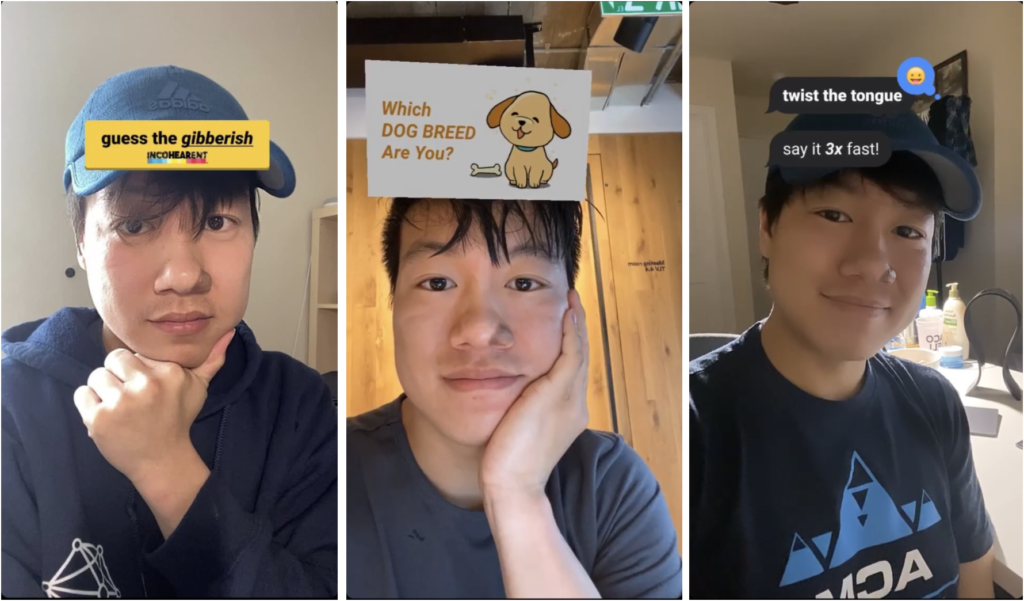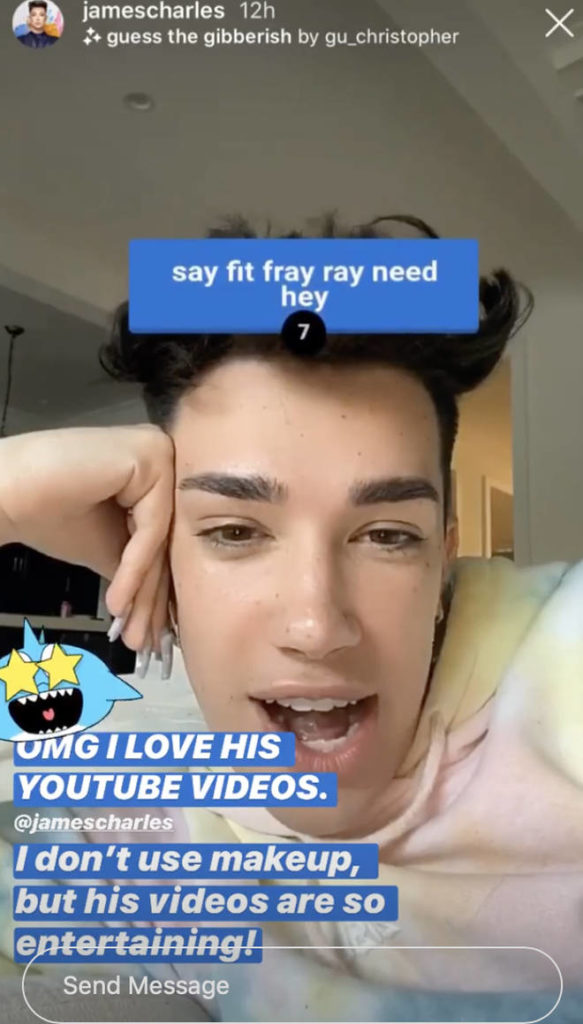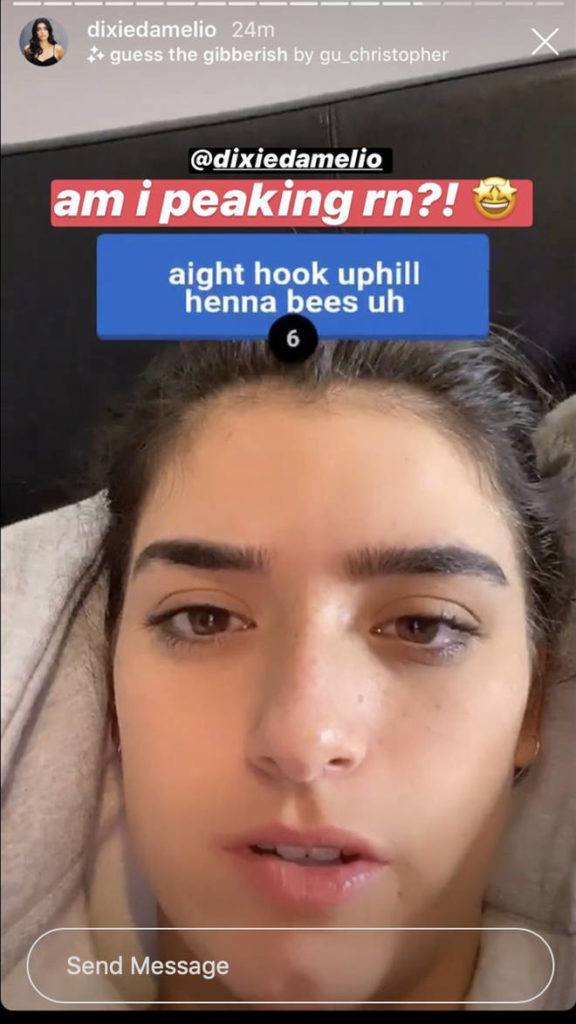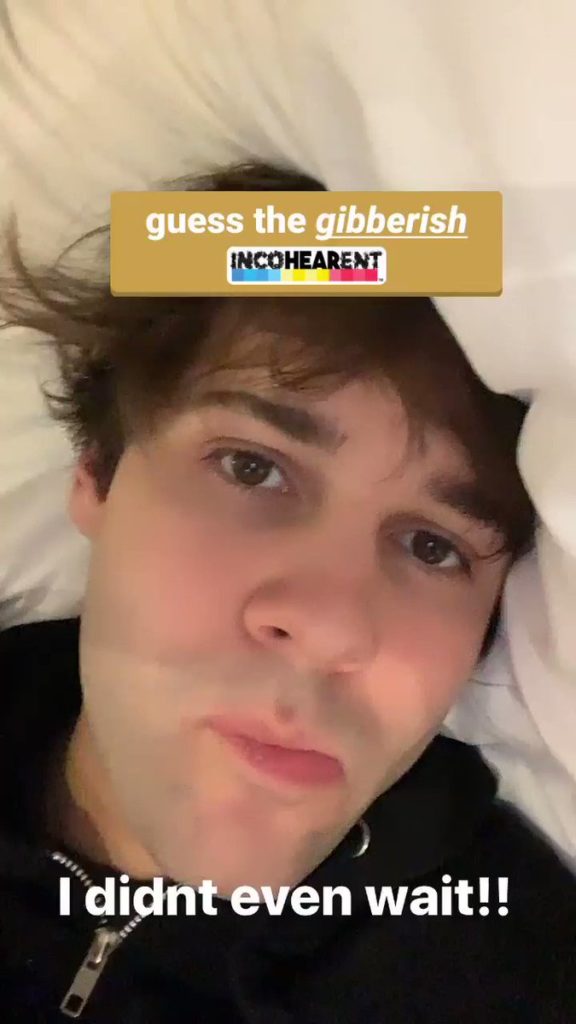
Have you spent time trying to decode gibberish, say tongue twisters, or figure out which dog breed you are? You’ve been using MLH Top 50 community member Chris Gu’s Instagram filters. Together his filters have been seen billions of times.
Chris recently sat down with us on Twitch to tell us more about the process of creating a viral Instagram filter.
Getting your start
You don’t need to be an expert to build a viral Instagram filter. Chris’s path started the winter-break of his senior year of college when he participated in a tech entrepreneurship program called TAVtech in Tel Aviv. Feeling overwhelmed by the cybersecurity track, his friend suggested that he try making an Instagram filter with Spark AR.
Chris started by creating the filter, “Which Dog Breed Are You?” in a day after watching a YouTube tutorial. Chris was blown away to find out he had gotten over 160 thousand views in the first day and 2.7 million by day three. The pleasure he got from having so many users enjoy his filter catapulted his interest in making more.
So what made his first filter go viral? When Chris was creating his first filter, he thought, “What is something everybody likes?” His immediate response was dogs. “It wasn’t the best looking filter, but it did the job.” Chris believes it went viral because What Are You filters were growing in popularity when he released it.
Build a filter that takes advantage of trends and existing interests.
Today, he uses the same methodology for his viral filters, but is able to make them in a matter of hours without the YouTube tutorial.
Going Viral
Chris’s most notable filter is his Gibberish filter in which users are given a phrase that they must speak out loud in order to figure out the true phrase which it sounds like. His filter took off after Chris messaged his favorite YouTubers, Elle Mills and Jenn McCallister, to see if they would share his filter since it was inspired by a video of them playing a similar game with their friends. They saw his message and shared a video of them playing the game on their Instagram stories. Through their combined audiences, the filter reached hundreds of thousands of people within one day. The filter was used by people such as Jason Derulo, Shane Dawson, Chance the Rapper, Pentatonix, Eva Chen, Addison Re, Joe Jonas, and many more. As of May 12th, the filter has 3.3 billion impressions.
Work with others to gain an audience.
The “Secret Sauce” for Filters
Chris explains the formula for a successful filter is:
- Replayable. For game filters, it has to be replayable. You don’t want to create something that a user will use once. They need to feel compelled to do it again and again. It keeps the user interested in the filter and makes them more inclined to share them in their stories.
- Short and Sweet. It can’t be too long of a game. Stories are 15 seconds long so if your game is a minute long, you’d have to post four stories and most people don’t want to watch their friend do something for a minute.
- Shareable. You want to get users to share it on their story because it will lead to audience growth and keep the chain reaction going.
Chris’s Process
Chris is all for making what makes you happy and that’s exactly what he’s been doing. Rather than creating filters to achieve virality, he creates filters he thinks his friends would use and so far, he’s made over 20! Ranging from skin smoothing to smile scores to tongue twisters, it’s clear that his imagination knows no bounds.
His creative process starts with writing down ideas in a notebook and drafting initial designs. He will then move into Figma where he will design the filter and eventually move into Spark AR to make the patches and add in the code.
Today, Chris’s personal social media has blown up as well, gaining over 80,000 new followers on Instagram. He commented on how strange it is to now have over 60,000 people watch his Instagram stories which could be anything from school work to side projects to singing but he says that not much has changed in his everyday life otherwise. He has also experienced some negative comments which he was not used to getting on his social media. “With the larger audience I’ve gained, I’ve definitely encountered people who were not fans of my filters. Honestly, it’s not too bad in the grand scheme of things because you can’t satisfy everyone, but it just sucks when people comment/dm me about it.”
Getting Started
Spark AR is Facebook’s AR studio designed to make stickers and filters. If you’re interested in getting started, Chris suggests going on YouTube. This is where he started and learned how to create his first filter. Many hackers in the community have created deep-dive tutorials that are extremely helpful. He also advises that you find something you’re passionate about and incorporate it into your filter. For instance, Chris has always loved to sing so he created a karaoke roulette filter.
If you want to get going the same way Chris did, he recommends watching the YouTube channels Catalyst and Emiliusvgs.
If you simply want to see Chris’s next creation follow him on Instagram or follow @MLHacks, where we’re sure to post some of his and the hacker community’s best filters.
Happy Hacking!


